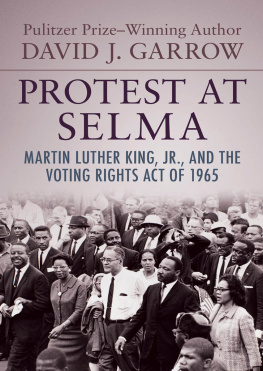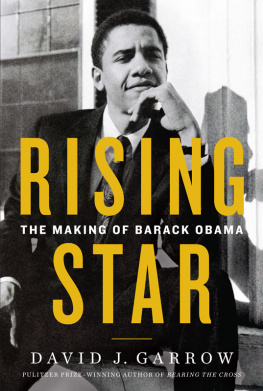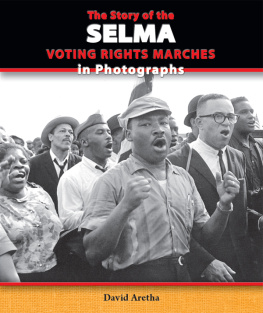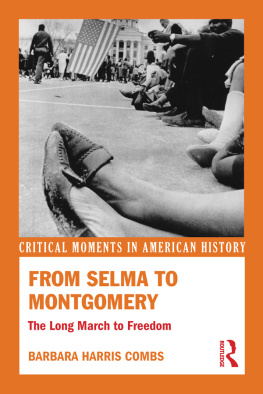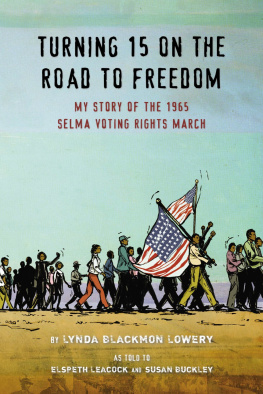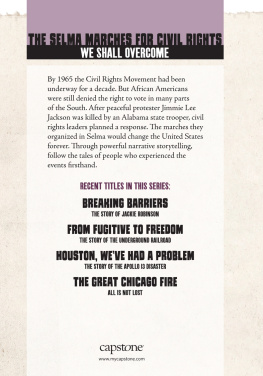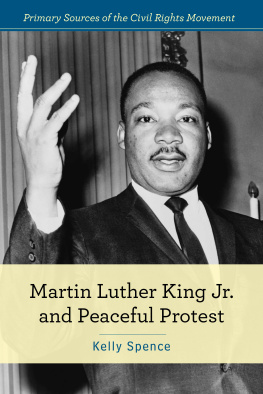Protest at Selma
Martin Luther King, Jr., and the Voting Rights Act of 1965
David J. Garrow

To EOG and the CSS
Contents
Illustrations
.
.
.
.
.
.
.
Tables
Preface
On August 6, 1965, the Voting Rights Act of 1965 was signed into law by President Lyndon B. Johnson, an event to which the newspapers of August 7 devoted headline coverage. On the same morning front-page stories also informed readers that voter registration officials in Sumter County, Georgia had dropped their opposition to a black registration drive that had been going on for some two weeks, and that some three hundred new black voters had been registered in Sumter County on August 6 alone. While at that time the second story and its timing were not especially notable, from the perspective of November 1976 the coincidence was noteworthy and perhaps rather ironic.
A decade after its enactment the Voting Rights Act was being called the most successful piece of civil rights legislation ever enacted by a former attorney general and one of the most important legislative enactments of all time by a leading educator who had served previously as chairman of the U.S. Civil Rights Commission. Perhaps surprisingly, these ten years had passed without the publication of even one book that told the story of the Voting Rights Act. This volume is in large part an attempt to fill that void.
This study had its origins in a tutorial paper written for David A. Titus in the College of Social Studies at Wesleyan University late in 1973. At his urging, and with the support provided by a Summer Study Grant from Wesleyan, I pursued the subject in my senior honors thesis. Throughout the drafting of that manuscript I benefited from the counsel of John G. Grumm, Herbert H. Hyman, Leon V. Sigal, and Clement E. Vose, as well as Professor Titus. My deepest thanks also go to my other tutors in the College of Social Studies, Eugene O. Golob, Richard V. Buel, and Jon Rasmussen. Valuable help at Wesleyan also was provided by a number of Olin Librarys professional staff members, especially Brian Rogers and Bill Dillon.
The initial suggestion that I revise the thesis manuscript for publication came from James David Barber of Duke University, and I shall remain in his debt. Valuable critical comments on the thesis manuscript were made by Russell D. Murphy of Wesleyan and David L. Paletz, David E. Price, and Ole R. Holsti of Duke. Sheridan Johns, Peter G. Fish, and Lester M. Salamon of Duke also provided assistance, and the Duke University Political Science Department graciously provided me with financial support while I revised the manuscript. Duke also provided me with the funds to travel to the Lyndon B. Johnson Library in Austin, Texas, where Martin I. Elzy, Tina Lawson, and Claudia Alexander were of great help.
At Duke, the Interlibrary Loan staff, headed by Emerson Ford, has provided almost continuous assistance for more than two years. I also have benefited from the perhaps unknowing assistance of many other friends, including the Sheplers, Karla Bell, Jacqueline Connelly, my sister Holly, and my parents. Marian Neal Ash of Yale University Press has provided invaluable counsel on numerous occasions. Bowden Anderson did a superb job of copyediting the manuscript.
The irony now visible in the front pages of the newspapers of August 7, 1965, is merely one small facet of a story that in large part reflects just how great the direct and indirect effects of the Voting Rights Act of 1965 have been upon the South and its politics. In 1965 few could have imagined that little more than a decade later a white former governor of Georgia from Sumter County would accept the presidential nomination of the Democratic party on a platform containing the Reverend Martin Luther King, Sr. and Coretta Scott King, and to the strains of the civil rights movements favorite anthem, We Shall Overcome.
In the wake of the strong support accorded Jimmy Carter in the 1976 general election by southern black voters, a number of political commentators have noted that any study of his success must take account of the substantial increase in the number of southern black voters that followed the enactment of the Voting Rights Act of 1965.much of the change that the Voting Rights Act has brought to the South and southern politics.
In the wake of that triumph, however, it would be wrong for observers to conclude that the long voting rights struggle has ended. Even in November 1976 several hundred federal observers were deployed in almost one dozen southern counties where black citizens feared that local white election officials would strive to dilute their votes, and in the aftermath of those elections charges of widespread irregularities were made in at least one locale.
While some notable victories were won by blacks in the South in 1976, such as the election of South Carolinas first black county sheriff, If the victory of Jimmy Carter is heralded as indicative and symbolic of how much southern politics has changed since the Voting Rights Act of 1965 became law, the defeat of Howard Lee indicates how far black southerners and the South as a whole still have to go.
Introduction: Voting Rights and Protest
This book is about voting rights, but it is also about protest, because the story of how southern blacks finally won equal voting rights cannot be fully appreciated without an understanding of how the dynamics of protest helped them to achieve the remarkable gains that they made.
The reason why the voting rights story cannot be understood without an appreciation of the dynamics of protest can be summarized in one word: Selma. In the long saga of southern blacks efforts to win free and equal access to the ballot, no one event meant more than the voting rights campaign in Selma, Alabama, in the first three months of 1965. Those three months represent the key period of time in the voting rights story, for it was during those weeks that the bill that was to become the Voting Rights Act of 1965 was drafted and began its path through the Congress.
The Voting Rights Act of 1965 revolutionized black access to the ballot throughout most of the Deep South. In so doing, it changed forever the politics of those states and, indirectly, those of the entire nation. While a subsequent chapter will detail the effects of the Voting Rights Act and how the enforcement of that law has proceeded, my main concern is how the Voting Rights Act of 1965 came into being. This is not, however, a book about how a bill becomes a law, a simple legislative history. Instead, it focuses on how the strategy of protest employed by the Southern Christian Leadership Conference and its president, Dr. Martin Luther King, Jr., influenced the emergence of the Voting Rights Act. The central episode in the voting rights story is the story of that act, and the story of the Voting Rights Act is inextricably tied to the story of the SCLCs protest campaign in Selma. Selma is the nexus at which the voting rights story and the dynamics of protest come together so vividly.
Chapters 2 and 3 relate that story, which began late in 1964 when the SCLC initiated its plans for a major campaign focusing upon voting rights and when serious discussion about drafting a voting rights bill in 1965 began within the Johnson administration.attacked by a large group of state and local lawmen on a highway just east of Selma. A tense and hectic week followed, and then, on March 15, Lyndon Johnson went before the Congress to urge passage of the voting rights measure his administration would soon introduce. Less than five months later, in early August, Johnson signed the Voting Rights Act of 1965 into law.

